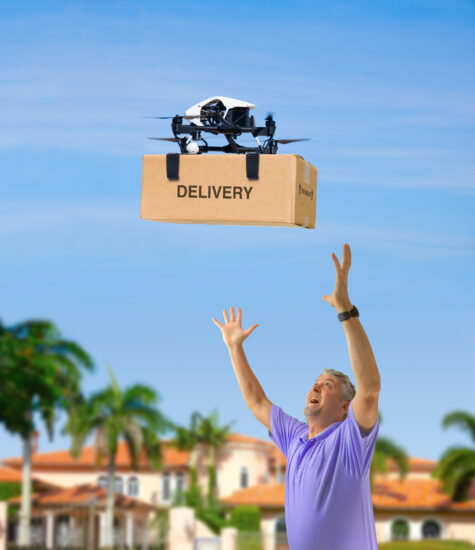(Don’t) Make Some Noise
Drone package delivery has its pluses and minuses.

One of the most substantial apprehensions the public-at-large has about UAV operations concerns the noise these aircraft will generate in the skies above their communities. And, justifiably so. Fleets of drones crisscrossing a city will more than likely generate a lot of (pardon the pun) buzz.
People want the convenience of having their packages delivered by drone, but if you’re not the one awaiting the arrival of your purchase, you may not be inclined to practice the biblical directive to “Love thy neighbor.”
A pair of scientists in Civil, Materials, and Environmental Engineering Department at the University of Illinois Chicago have developed a plan to mitigate the noise factor and make drone deliveries more palatable, which, in turn, is likely to make them more feasible and more profitable.
A 5-point Plan
To develop an effective framework for metropolitan drone operations which maximizes operational efficiency and minimizes the noise impact Nahid Parvez Farazi, PhD, a senior analyst with United Airlines and Bo Zou, an associate professor at the University of Chicago developed a 5-point plan to address the concerns of UAV operators and the communities in which they hope to operate. The plan consisted of five key elements:
- Propose an operation planning framework for eVTOL-based package delivery
- Develop a method to quantify community noise impact of eVTOL operations
- Formulate a bi-objective integer program to optimize shipping cost and noise impact
- Design a solution algorithm augmenting non-dominated sorting genetic algorithm 2
- Implement integer program and algorithm in a case study in the Chicago metro area.
The researchers began by developing a method to quantify the noise impact eVTOL operations will have on a community. The pair used a “population exposure” measure based on the level of sound generated, the number of people impacted, and the duration of the impact.
Farazi and Zou then formulated a bi-objective integer programming model to optimize shipping costs and minimize the noise impact of these package delivery operations. Their model considers the operational constraints, maximum distance for local delivery, departure time from the warehouse, eVTOL fleet size and carrying capacity. By quantifying the shipping costs and community noise impact, the study revealed several operational insights. Then, Farazi and Zou could assess the efficiency and effectiveness of their proposed solution algorithm and compare it to alternative solution methods.
The study will be published in the September 2024 issue of Transportation Research Part E: Logistics and Transportation Review. Using the ‘population exposure” measure and the sound impact on the communities where operators hope to provide eVTOL package delivery services, “Planning electric vertical takeoff and landing aircraft (eVTOL)-based package delivery with community noise impact considerations” promises to be a useful guide to fostering public acceptance of this innovative application of AAM.

#AAMtoday #AAM #UAVs #eVTOLs #drones #drone delivery #UAM


